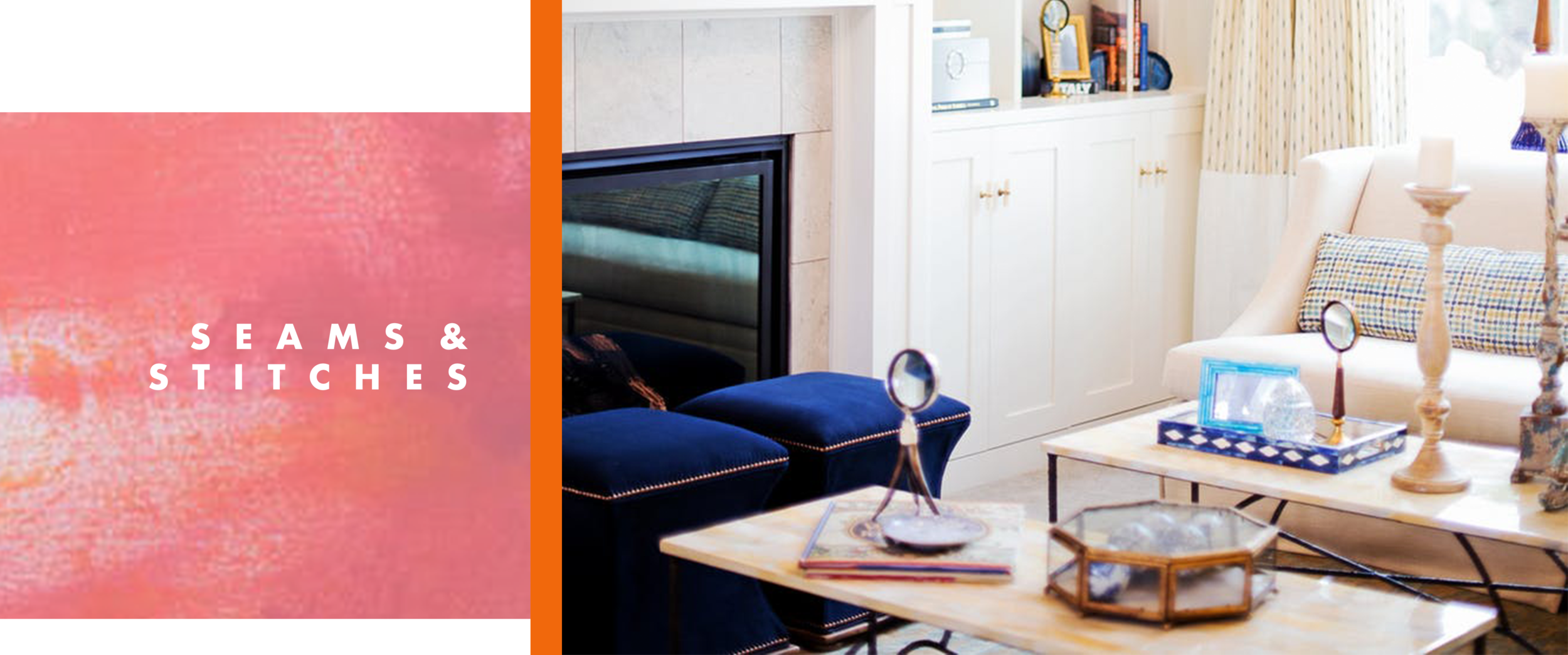The Little Details: Seams & Stitches

Upholstery techniques—even the little details like seams and stitches—can make a piece feel more formal or more casual. Upholstery seams, for example—serve two purposes—both form and function. They have a practical function that allows them to hold the fabric together better or ensure a deeper sense of security, but they can also add visual interest to a piece otherwise lacking.
A clean seam (also known as a blind seam) is where two fabrics (right side together) join with no further embellishment. It is the most basic of upholstery seams and is useful for many areas of sofa upholstery and cushion making where very strong seams aren’t as important.
If used alone, it should be of a high enough quality to ensure resiliency and fitted correctly so as to not cut through any surrounding foam.
A double-stitched seam is the same as a plain seam but with two rows of parallel stitching on the fabrics right side, either side of the original seam. This results in a more robust seam often used for decoration, especially with leather upholstery.
A flat-felled seam is created by stitching a fabrics wrong sides together with one seam allowance greater than the other. This is folded over the shorter seam allowance and stitched to secure. The two are then laid flat on the side of the shorter seam allowance and stitched one last time. This seam is often seen used in apparel, like jeans.
A French seam is a seam within a seam. A seam is sewn with the fabrics wrong sides together, then the right sides are folded together and stitched slightly past the initial seam, resulting in a flange with enclosed raw edges. These are used internally and externally for strength and aesthetics.
A lapped seam is created by folding over a seam allowance on one piece of fabric (right side up) and aligning it with the seam of another piece of fabric (right side up) and stitching close to the fold with a top seam. Lapped seams are used to create crisp, non-bulky seams.
Top stitching is the highlighting of a seam with an additional top stitch that parallels the original seam in either a tone-on-tone or contrasting thread. This draws attention to the area, adding interest. In upholstery, it can also be referred to as a saddle stitch or double stitch.





